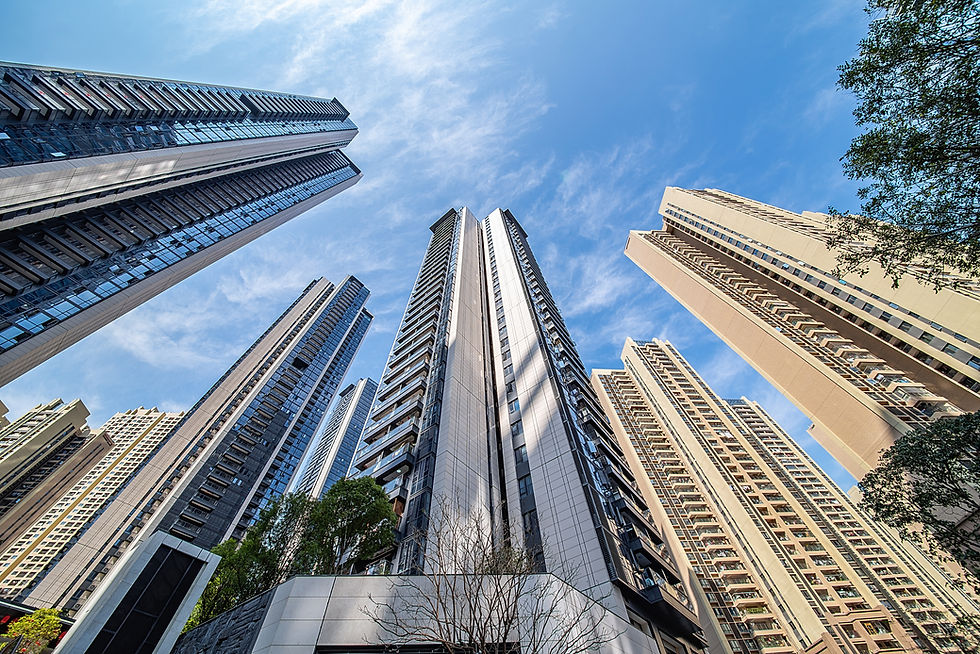How Long Does It Take to Complete a Commercial Lease Transaction?
- marketing08413
- Nov 6
- 3 min read
One of the most common questions in commercial real estate is: How long does it take to complete a lease transaction?
While every deal is unique, understanding the general timeline helps tenants, landlords, and investors plan effectively and move through the process with confidence. The good news is that, with an experienced broker guiding the way, commercial leasing can be a smooth and efficient experience.
Understanding the Typical Timeline
The time it takes to complete a lease transaction depends on the size, complexity, and type of property involved. Smaller office or retail deals can often be finalized within one to three months, while larger or more customized projects, such as build-to-suit developments, can take six months or longer.
Although timelines vary, most transactions follow a predictable sequence that includes property search, negotiation, legal review, and, when necessary, build-out.
Step One: Defining Space Requirements
The process begins with clarity. Tenants work with their broker to outline specific needs such as square footage, location preferences, layout requirements, and budget.
This phase is foundational and typically takes one to two weeks. Having a clear understanding of what the business requires allows the search to move forward efficiently and reduces the risk of delays later in the process.
Step Two: Property Search and Tours
Once the criteria are established, the broker conducts a targeted property search, identifying spaces that meet the client’s needs. From there, property tours are scheduled to evaluate the options firsthand.
Depending on market conditions and availability, this stage can take anywhere from two to four weeks. In active markets, decisions can often be made faster when desirable properties are limited, while more specific requirements may extend the search.
Step Three: Letter of Intent (LOI) Negotiation
After selecting a preferred property, the tenant and landlord begin negotiating the Letter of Intent (LOI) — a non-binding document that outlines key business terms such as rental rate, lease term, and improvement allowances.
This stage typically lasts one to three weeks, depending on how quickly both parties review and respond to proposed terms. A well-structured LOI sets the tone for a smooth lease negotiation.
Step Four: Lease Drafting and Legal Review
Once the LOI is agreed upon, the landlord’s attorney prepares a formal lease draft. The document is then reviewed and negotiated by both sides’ legal and brokerage teams.
This stage can take three to six weeks on average. The duration depends largely on the complexity of the lease, the responsiveness of each party, and any requested revisions. Brokers play a key role here by maintaining communication and ensuring momentum is not lost.
Step Five: Tenant Improvements and Build-Out
For spaces that require construction or customization, build-out timelines can vary significantly based on the scope of work, permitting requirements, and contractor availability. Smaller office modifications may take a few weeks, while full build-outs or retail conversions can span several months.
During this phase, brokers often continue to assist by coordinating communication between tenants, landlords, and contractors to keep projects on schedule.
Step Six: Lease Execution and Move-In
Once all terms are finalized, the lease is executed, and both parties sign the agreement. The tenant then provides any required deposits, certificates of insurance, and documentation.
At this point, the tenant can coordinate move-in logistics — setting up utilities, furnishing the space, and officially taking occupancy. This final step usually takes one to two weeks and marks the completion of the leasing process.
Factors That Influence Timing
Several factors can affect how quickly a deal moves forward:
Complexity of negotiations: Straightforward deals with standard lease terms typically move faster than custom agreements.
Market conditions: Competitive markets may require quicker decisions to secure desirable spaces.
Build-out requirements: The extent of construction or improvements can significantly impact total duration.
Legal and administrative review: Timely communication between all parties helps prevent unnecessary delays.
Working with an experienced broker ensures these elements are managed efficiently, keeping the process organized and on track.
The Big Picture: Staying Positive in Today’s CRE Market
Even as the commercial real estate landscape evolves, leasing activity remains strong across many sectors — particularly in flexible office spaces, neighborhood retail centers, and industrial facilities. Businesses continue to adapt and grow, creating opportunities for both tenants and investors.
With clear communication, realistic expectations, and proactive guidance from a brokerage team, the leasing process can move forward smoothly and predictably.
Final Thoughts
While no two lease transactions are exactly alike, most can be completed efficiently with the right preparation and professional support. From initial planning to move-in day, each step of the process plays an important role in achieving a successful outcome.
Whether you are a tenant expanding your business, a landlord seeking to fill space, or an investor exploring new opportunities, understanding the typical leasing timeline allows you to plan strategically and move forward with confidence in today’s commercial real estate market.
Written by LevRose CRE with assistance from: LevRoseCRE.(2024)
ChatGPT [Open AI]. https://chat.openai.com/



